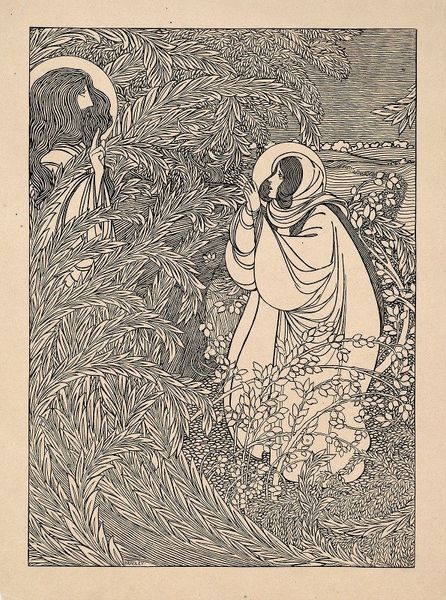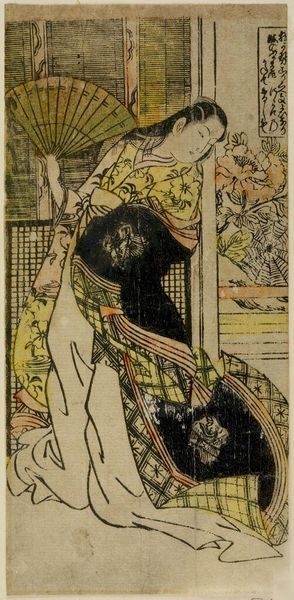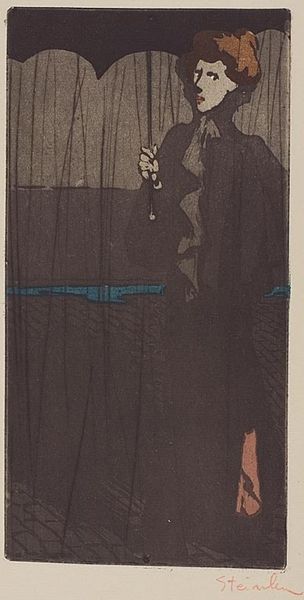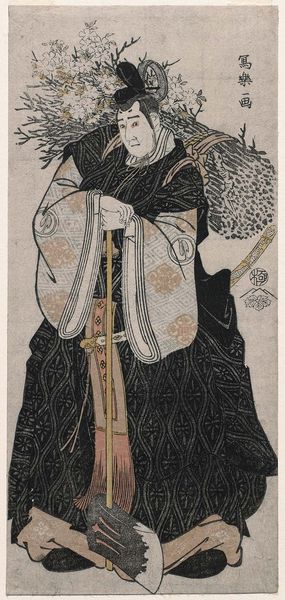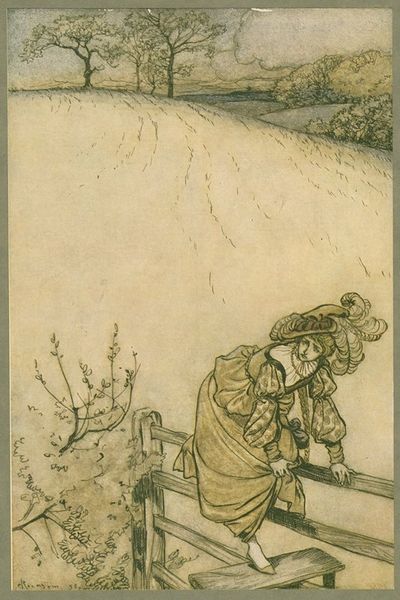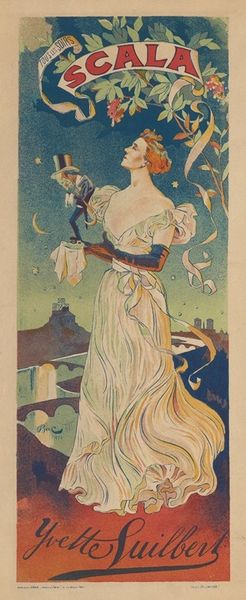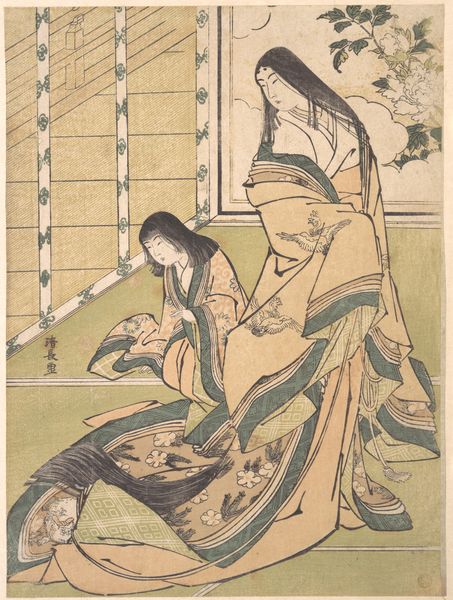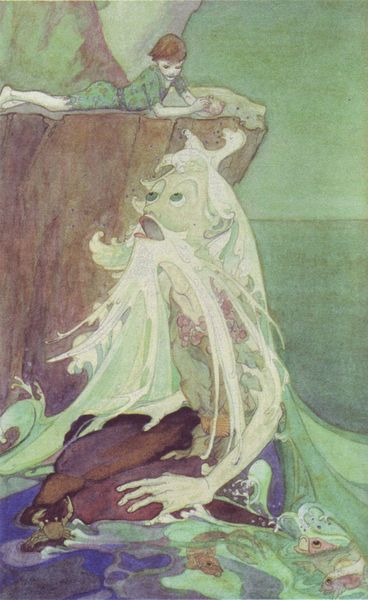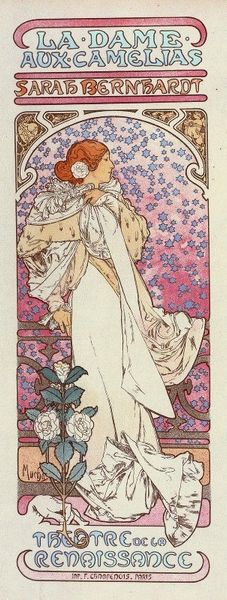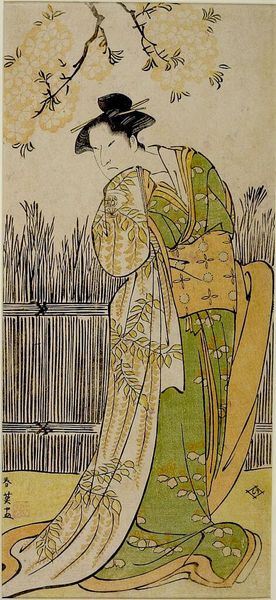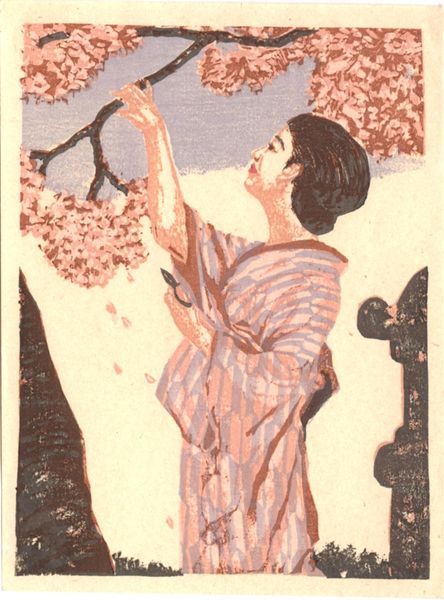
Copyright: Public Domain: Artvee
Tsukioka Yoshitoshi created "Konkai" with woodblock printing techniques during a time of significant cultural change in Japan. As Japan opened to the West, artists grappled with how to represent shifting identities. Yoshitoshi’s print plays with the concept of transformation, presenting a figure with a fox's head dressed in what appears to be women's clothing. In Japanese folklore, foxes, or kitsune, are often depicted as shape-shifters, capable of assuming human form, and they are frequently associated with trickery, seduction, and magic. "Konkai" is intriguing because the figure seems to deliberately blend genders. Yoshitoshi was known for his interest in the supernatural and the macabre, and I find it fascinating that he uses these elements to explore ideas about identity and deception. The emotional impact of “Konkai” comes from this tension between the familiar and the strange, raising questions about appearance versus reality. Ultimately, “Konkai” is a mirror reflecting the anxieties and curiosities of a society in transition, using folklore to explore the fluidity of identity.
Comments
No comments
Be the first to comment and join the conversation on the ultimate creative platform.

